Yossi Zana
Face Verification in Polar Frequency Domain: a Biologically Motivated Approach
Sep 27, 2005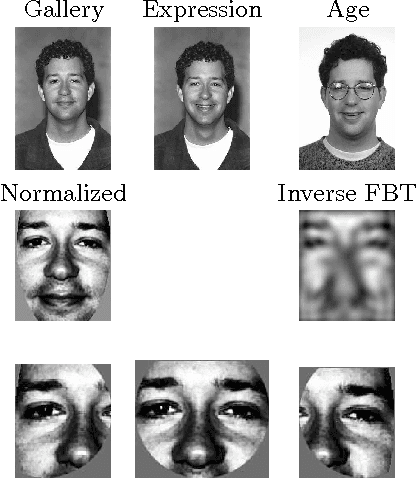
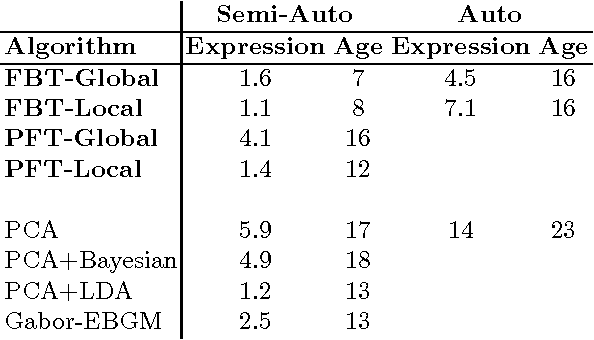
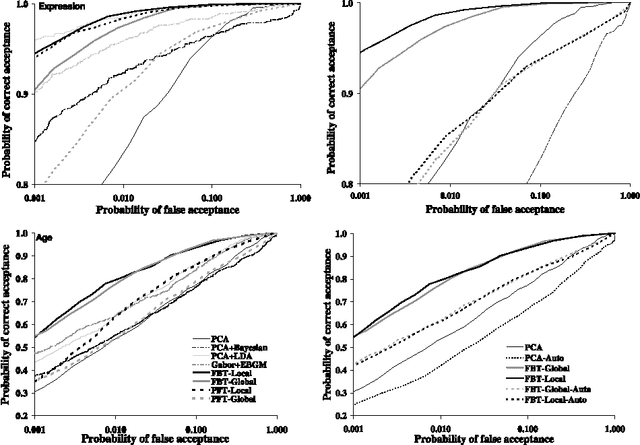
Abstract:We present a novel local-based face verification system whose components are analogous to those of biological systems. In the proposed system, after global registration and normalization, three eye regions are converted from the spatial to polar frequency domain by a Fourier-Bessel Transform. The resulting representations are embedded in a dissimilarity space, where each image is represented by its distance to all the other images. In this dissimilarity space a Pseudo-Fisher discriminator is built. ROC and equal error rate verification test results on the FERET database showed that the system performed at least as state-of-the-art methods and better than a system based on polar Fourier features. The local-based system is especially robust to facial expression and age variations, but sensitive to registration errors.
Face Recognition Based on Polar Frequency Features
Sep 27, 2005



Abstract:A novel biologically motivated face recognition algorithm based on polar frequency is presented. Polar frequency descriptors are extracted from face images by Fourier-Bessel transform (FBT). Next, the Euclidean distance between all images is computed and each image is now represented by its dissimilarity to the other images. A Pseudo-Fisher Linear Discriminant was built on this dissimilarity space. The performance of Discrete Fourier transform (DFT) descriptors, and a combination of both feature types was also evaluated. The algorithms were tested on a 40- and 1196-subjects face database (ORL and FERET, respectively). With 5 images per subject in the training and test datasets, error rate on the ORL database was 3.8, 1.25 and 0.2% for the FBT, DFT, and the combined classifier, respectively, as compared to 2.6% achieved by the best previous algorithm. The most informative polar frequency features were concentrated at low-to-medium angular frequencies coupled to low radial frequencies. On the FERET database, where an affine normalization pre-processing was applied, the FBT algorithm outperformed only the PCA in a rank recognition test. However, it achieved performance comparable to state-of-the-art methods when evaluated by verification tests. These results indicate the high informative value of the polar frequency content of face images in relation to recognition and verification tasks, and that the Cartesian frequency content can complement information about the subjects' identity, but possibly only when the images are not pre-normalized. Possible implications for human face recognition are discussed.
Automatic Face Recognition System Based on Local Fourier-Bessel Features
Sep 27, 2005
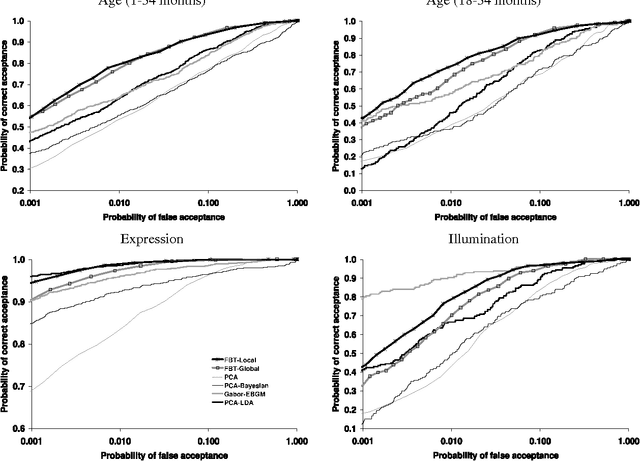
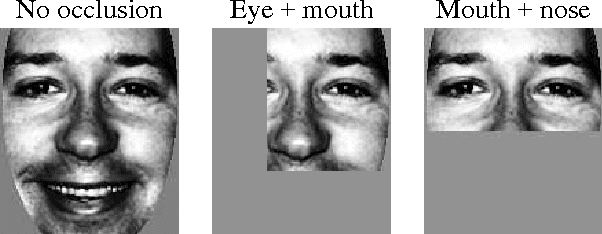
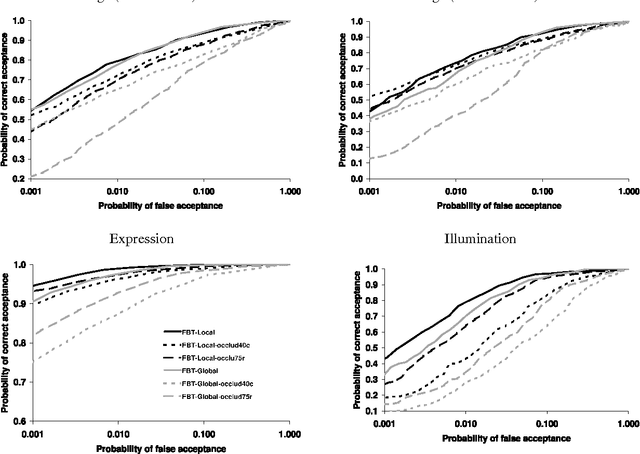
Abstract:We present an automatic face verification system inspired by known properties of biological systems. In the proposed algorithm the whole image is converted from the spatial to polar frequency domain by a Fourier-Bessel Transform (FBT). Using the whole image is compared to the case where only face image regions (local analysis) are considered. The resulting representations are embedded in a dissimilarity space, where each image is represented by its distance to all the other images, and a Pseudo-Fisher discriminator is built. Verification test results on the FERET database showed that the local-based algorithm outperforms the global-FBT version. The local-FBT algorithm performed as state-of-the-art methods under different testing conditions, indicating that the proposed system is highly robust for expression, age, and illumination variations. We also evaluated the performance of the proposed system under strong occlusion conditions and found that it is highly robust for up to 50% of face occlusion. Finally, we automated completely the verification system by implementing face and eye detection algorithms. Under this condition, the local approach was only slightly superior to the global approach.
 Add to Chrome
Add to Chrome Add to Firefox
Add to Firefox Add to Edge
Add to Edge